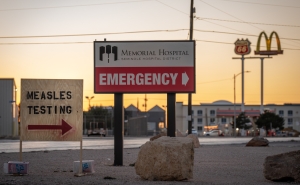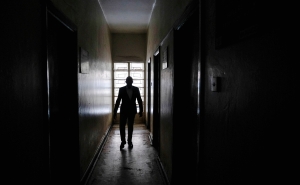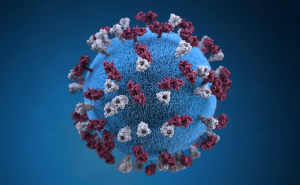Overdispersion of COVID-19

Why a Small Percentage of People May Be Responsible for a Large Share of the Disease’s Spread
An Interview with Justin Lessler and Kyra Grantz
In this interview, adapted from a podcast episode of Public Health On Call, Joshua Sharfstein talks to two Johns Hopkins epidemiologists, Justin Lessler and doctoral student Kyra Grantz, about the concept of overdispersion—the idea that maybe 10% or 20% of people with COVID-19 are responsible for the majority of the disease’s spread. What’s the evidence for overdispersion, and what does it mean for how we can respond?
Joshua Sharfstein: Can you explain overdispersion?
Kyra Grantz: Overdispersion is actually not specific to infectious diseases. It’s more of a statistical phenomenon. But in infectious diseases, it normally manifests as the idea that a small proportion of people are responsible for a very large proportion of transmission. For CoV-2, we think that about 10% of people are responsible for about 80% of transmission, which means that it’s highly overdispersed.
JS: So in other words, most people may give it to one person or no people. But then there’s some small set who might give it to 10, 20, 30, or even 50 people.
KG: Exactly. We often use the phrase superspreading event to talk about those high transmission events.
JS: Justin, what is the evidence that transmission of the coronavirus is subject to overdispersion?
Justin Lessler: We have a few threads of evidence. One is [that] we see superspreading events—though I would be cautious about overinterpreting that, because it’s a bit biased in observation. You’re going to hear about it if a ton of people get infected in a choir, [for example]. But if you got infected when you went to Starbucks, nobody’s going to be reporting [it] on CBS News.
What originally got Kyra and me interested in this, way back in—I think it was February—was the fact that it was taking a long time for the disease to show up in countries. Even though there was a big vigorous outbreak going on in Hubei Province, we weren’t seeing the disease show up in other countries. And a lot of people were asking why.
And we were saying, well, this overdispersion phenomena is one possible explanation. If a lot of people aren’t transmitting but a few people are transmitting a lot, what happens is you have to wait longer for [one of those people] to come along to start an epidemic in your country. When it does start, it starts fast. But it takes longer for it to show up. And I think that was an early piece of evidence.
And I want to give one final piece of evidence—because it also illustrates something that we want to be very clear about in overdispersion—[and that] is household studies. Even when we look at household studies or contact tracing studies, like we did in Shenzhen, China, we find evidence of overdispersion. There, we’re contrasting zeroes with threes, fours, and fives, in terms of number transmission. It doesn’t have to be 10s, 20s, 30s to be overdispersed. It can be lower numbers, but the phenomena can still be there.
JS: Interesting. Is there biological evidence there? In other words, do you see that some people barely emit virus, and other people emit huge amounts of virus? Or has the biological evidence not really been brought together yet with this epidemiological evidence?
JL: I think there is biological evidence for variation in how much people shed virus. But I really wouldn’t focus on the biology so much in thinking about overdispersion. I would think about the intersection between biology and social contact, or social interaction.
It could be that all of us shed a ton of virus on our third day after infection. But most of us stay home and watch Netflix, whether or not we’re feeling sick. But that one person who went out to the grocery store or went to a choir practice or something like that—that person, because they did it at that right moment, could cause tons and tons of transmission. Whereas all of the other people who stayed home would not. And human contact itself is overdispersed. Therefore, transmission comes from human contact.
JS: Kyra, what are the implications of this evidence and this theory? What does this mean for how we can fight the coronavirus?
KG: I think Justin already touched on a key implication, which is that when you’re looking at introduction of the virus into a new place, you might not see transmission immediately. For places that have really strong border control, you might not see as many introductions. But even a single introduction can very quickly spark a large outbreak—if that happens to be [an] unfortunate superspreading event.
When you are dealing with a place that has more established transmission, you can think about it in terms of how you design your intervention. Most people aren’t going to transmit a lot, so if you’re able to identify the contacts or the people that are most liable for these superspreading events, then you might be able to have more targeted control.
And we’ve seen this, for example, in Japan. They’ve invested a lot in what they call their backwards tracing or their cluster investigation: When they identify a new case, they go back in time to try to find out where that individual was infected, because that gives them a higher probability of finding these superspreading events that they can then shut down. And it also gives them evidence for, just broadly, where these events are occurring, and where they might put in restrictions or recommendations—for example, that people not visit crowded, indoor locations.
The problem is that that targeting is very difficult, and we don’t always know where these events occur. And again, if you miss even just one or two of these big superspreading events, you’re going to very quickly lose control of an outbreak.
JS: Does this imply that it does make sense to have regulatory policies that limit certain kinds of gatherings, for example? Because they’re just so likely to be in that 10% of transmission?
KG: I think so. As Justin said, a lot of overdispersion is the overdispersion in social contact. And if we can limit the number of times that an infected person comes in contact with 10 or 20 or 50 people, they won’t be able to infect 10 or 20 or 50 people.
JS: Justin, is this the epidemiological explanation for why it’s not a good idea to have a wedding with 400 people or people are thinking about limiting access to bars and other locations like that?
JL: Yeah. I think it is in a lot of ways. We don’t need a fancy term to know that getting a ton of people together is going to give the opportunity for virus to spread easily.
We recently published something talking about this idea of hierarchies of risk in transmission. The greatest risk of transmission—despite all this debate about aerosol or droplets or whatever—is in households, these long-term, close, intimate contacts. But if the virus were only transmitted in households, it would die out. Because it needs to get between those households.
And those big events are really good at connecting up a lot of households and allowing the virus to jump between these places where it transmits most efficiently and allow it to keep surviving.
JS: Do you think that if we were able to cut off a big chunk of those 10% spreading events—the amount of transmission that goes from not just one to one person, but one to 10, one to 20—if we could cut those out, it would make it harder for the virus to spread within a population? How much harder do you think it would make it?
JL: I think it would make it a lot harder. It would be disproportionately efficient. Any limitation in contact is helpful. imiting big gatherings may have a bigger impact than simply the percentage of transmission that happens at those events, [because] you need these big superspreading events to keep the virus reseeding in the places that it transmits really efficiently.
JS: Kyra, any final thoughts about the implications of overdispersion?
KG: I think, exactly as Justin was saying, it’s not at all shocking that shutting down these larger events and larger social gatherings would have a lot of impact. And I think the idea of overdispersion got a lot of attention because people are naturally really interested in superspreading, but it doesn’t fundamentally really shift how we think about the virus. I think it gives us some new ideas for thinking about targeted control, but a lot of what we’ve already known about controlling diseases still applies.
Justin Lessler, PhD ’08, MHS ’08, MS, is an associate professor in Epidemiology. Kyra Grantz is a PhD student in Epidemiology. They are both members of the Infectious Disease Dynamics Group at the Bloomberg School.
RELATED CONTENT
Public Health On Call
This conversation is excerpted from the November 13 episode of Public Health On Call.





